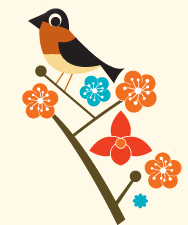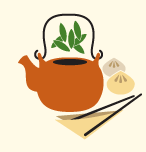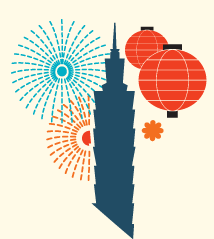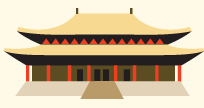A member of PEX posted a query in the Taiwan travel thread about what to do during a stopover in Taiwan with 3 to 4 hours to spare. I said I think a visa is still required, unless exempted. As for things to do, I really am not sure since Taipei is an hour away by bus from the Taoyuan International Airport. What I do know is that Taiwan, as other countries, have free half-day tours for transit passengers courtesy of the Taiwan Tourism Bureau for transit passengers, but only for those with at least 7 hours to spare.
I copied the mechanics from the Taiwan Tourism Bureau website below for quick reference:
Transit or transfer passengers with 7-24 hours before their next connecting flight, and who have a valid R.O.C. visa or come from countries eligible for visa-exempt entry can participate.
Countries eligible for visa-exempt entry: Australia, Austria, Belgium, Bulgaria, Canada, Cyprus, Czech Republic, Denmark, Estonia, Finland, France, Germany, Greece, Hungary, Ireland, Iceland, Italy, Japan, Republic of Korea, Latvia, Liechtenstein, Lithuania, Luxembourg, Malaysia, Malta, Monaco, the Netherlands, New Zealand, Norway, Poland, Portugal, Romania, Singapore, Slovakia, Slovenia, Spain, Sweden, Switzerland,the Vatican,the U.K., and the U.S.A..
Also eligible are citizens from India, Thailand, the Philippines, Vietnam and Indonesia who hold a valid visa — or permanent residency — to the U.S., Canada, Japan, the U.K., any Schengen Convention country, Australia or New Zealand. Citizens of the five Asian countries meeting the above qualifications and having never been employed in Taiwan as blue-collar migrant workers are eligible for the tours, but must first apply for visa-exempt entry by registering on the National Immigration Agency’s website: http://www.immigration.gov.tw/. Registrants must also print out a confirmation, which they must present at check-in before boarding their flight for Taiwan.
Note:
Terminal 1 Terminal 2 Return to Airport(Depending on traffic) Departure Time 08:15 08:00 Before 13:00 Departure Time 13:45 13:30 Before 18:30
1. Each tour is limited to 18 passengers on a first come, first served basis.
2. As there is no room for luggage on the bus, please store all luggage at the airport baggage service counter (fee required) before boarding the bus.
Tourist Service Center, Airport Arrival Lobby
TEL: 03-398-2194, 03-398-3341 Or dial 2194 or 3341 from the airport’s courtesy telephone
Service Hours: 07:00~23:30
A: Passport valid for at least six months
B: Completed Immigration Embarkation/Disembarkation Card available at Immigration counter
 *The Tourism Bureau reserves the right to cancel tours in case of inclement weather.
*The Tourism Bureau reserves the right to cancel tours in case of inclement weather.
A short trip to the lush countryside southwest of Taipei brings you to Yingge, where hand-painted replicas of elegant Ming (1368-1644) and Qing (1644-1911) vases, along with other types of artistic and functional ceramics, are produced. The small town is Taiwan’s pottery center and its narrow streets are lined with shops selling everything from earthenware tea sets to delicate statues.
(when museum is open)
The Yingge Ceramics Museum, the first pottery museum in Taiwan, is a modern, glass-walled structure that imparts sense of limitless space and the beauty of simplicity. It presents 200 years of ceramic evolution and folk culture in Taiwan. It is a symbol of history and cultural as well as a place to find peace of mind.
Sanxia, about 22 km southwest to Taipei, is a bustling town with narrow, winding streets and brick buildings, many over a century old. The main attraction is Zushi Temple, built in honor of Song Dynasty (960–1279) loyalist Chen Chao-ying. Chen was a famous general knighted as “Protector of the Country” for his achievements and valour. This temple was in ruins at the end of World War II, and a meticulous restoration project has been underway for some forty years. The temple is known for its intricately carved stone and bronze columns and statues, especially the temple’s unique bird art. There are also carved stone lions, camphor wood carvings, and exquisite bronze bas-reliefs.
Taipei 101 stands 508 meters high with 101 stories on a site area of 30,278 square meters. The development comprises an office tower, a shopping mall and an observatory. It was certified to be the world’s tallest building and when it was opened to the public on December 31, 2004.
Taipei is home to many temples. Of these, Longshan Temple is the oldest and most famous. It is also one of Taiwan’s finest examples of temple architecture.
The building which houses the Office of the President of the Republic of China was inaugurated in March 1919, about seven years after construction began. Its architectural design features an elegant and majestic symmetry. Inside the building there are tall pillars, refined ornaments, long corridors and exquisite arches, all Baroque characteristics which prevail in the Renaissance period. Since the central government was relocated to Taipei in 1949, this building has been used as the Office of the President.
The Chiang Kai-Shek Memorial Hall is an impressive monument built in commemoration of the late President Chiang. The majestic hall towers over 25 hectares of landscaped gardens, graceful pavilions, and ponds. A statue of the late President Chiang looks out over the city from the main building.
The elegant Ming Dynasty-style arch at the main entrance is flanked by two classical buildings–the National Theater and the National Concert Hall. The square between the two buildings is a popular gathering place during festive occasions.
This is an excellent example of classical Ming dynasty architecture, dedicated to the fallen heroes of China’s wars. There is an hourly changing of the guard ceremony at the entrance, which many people find interesting.







